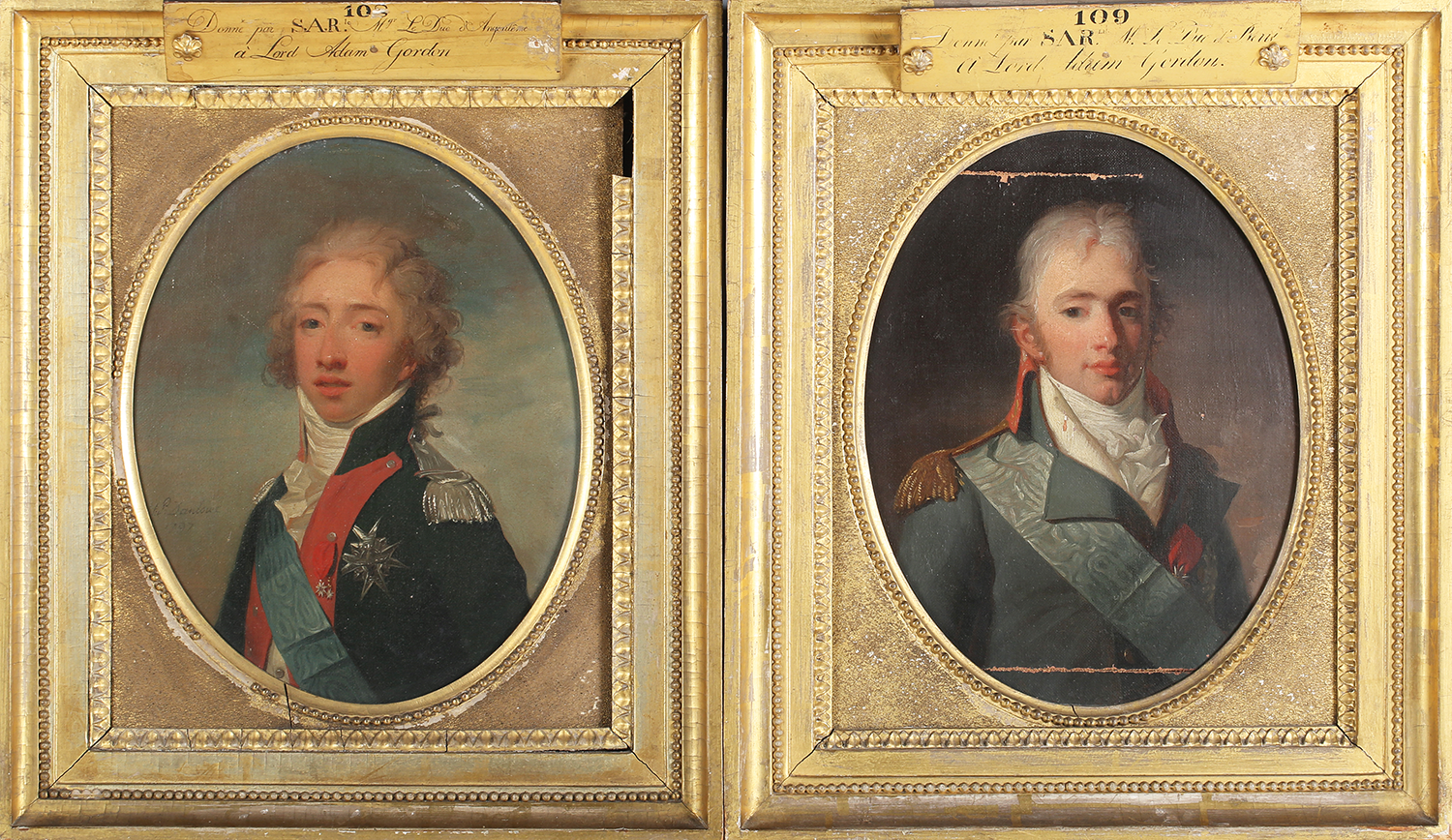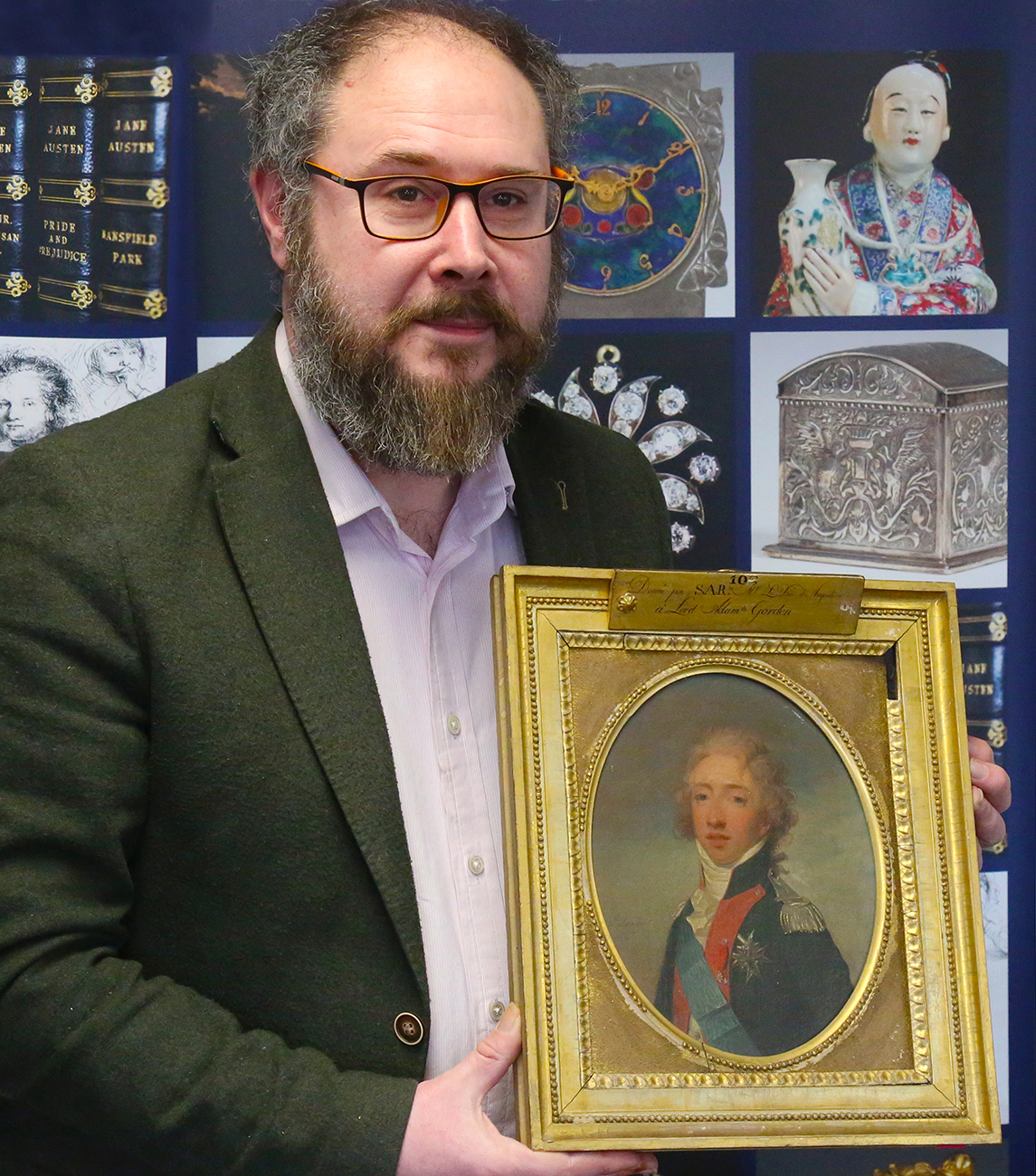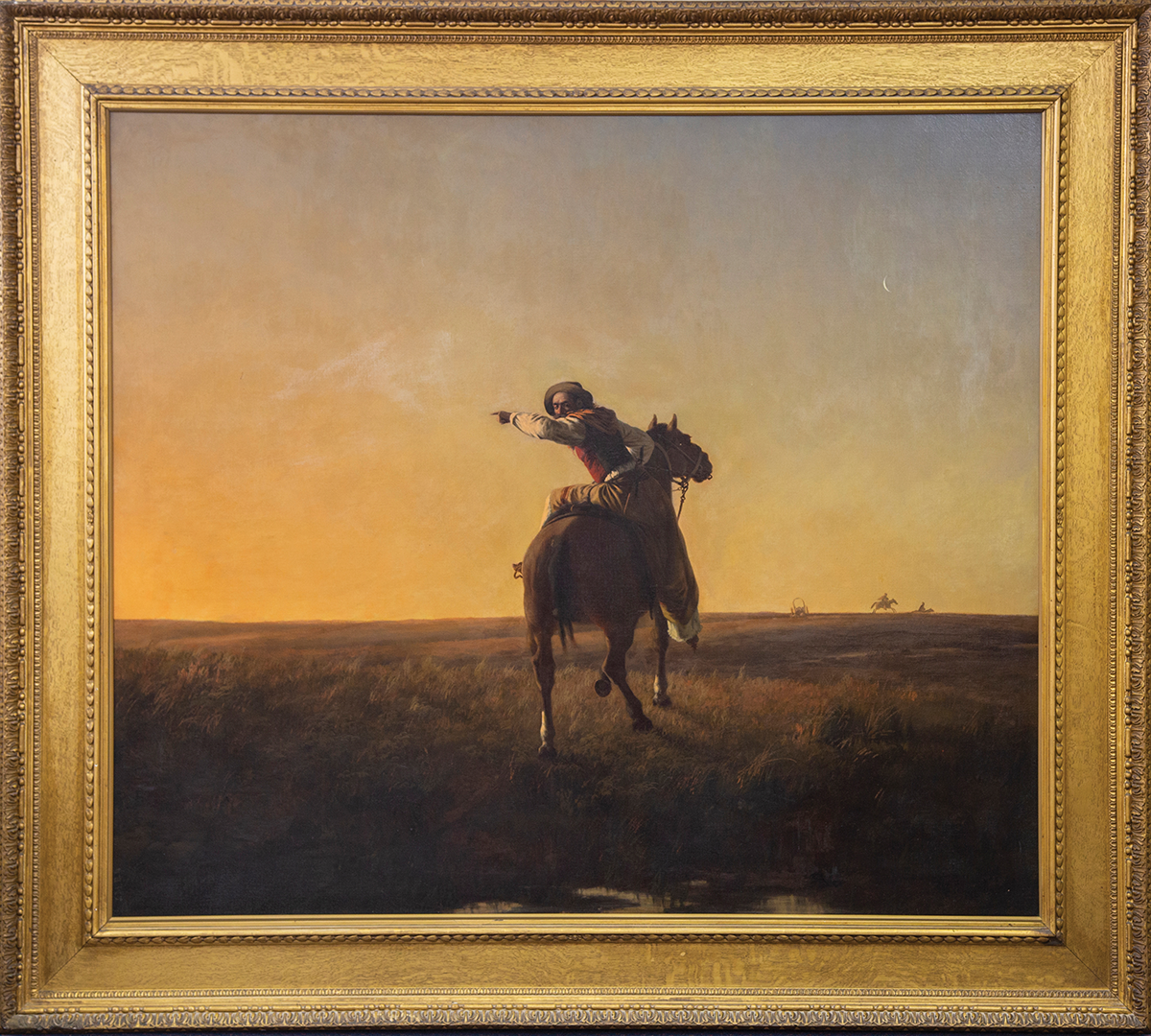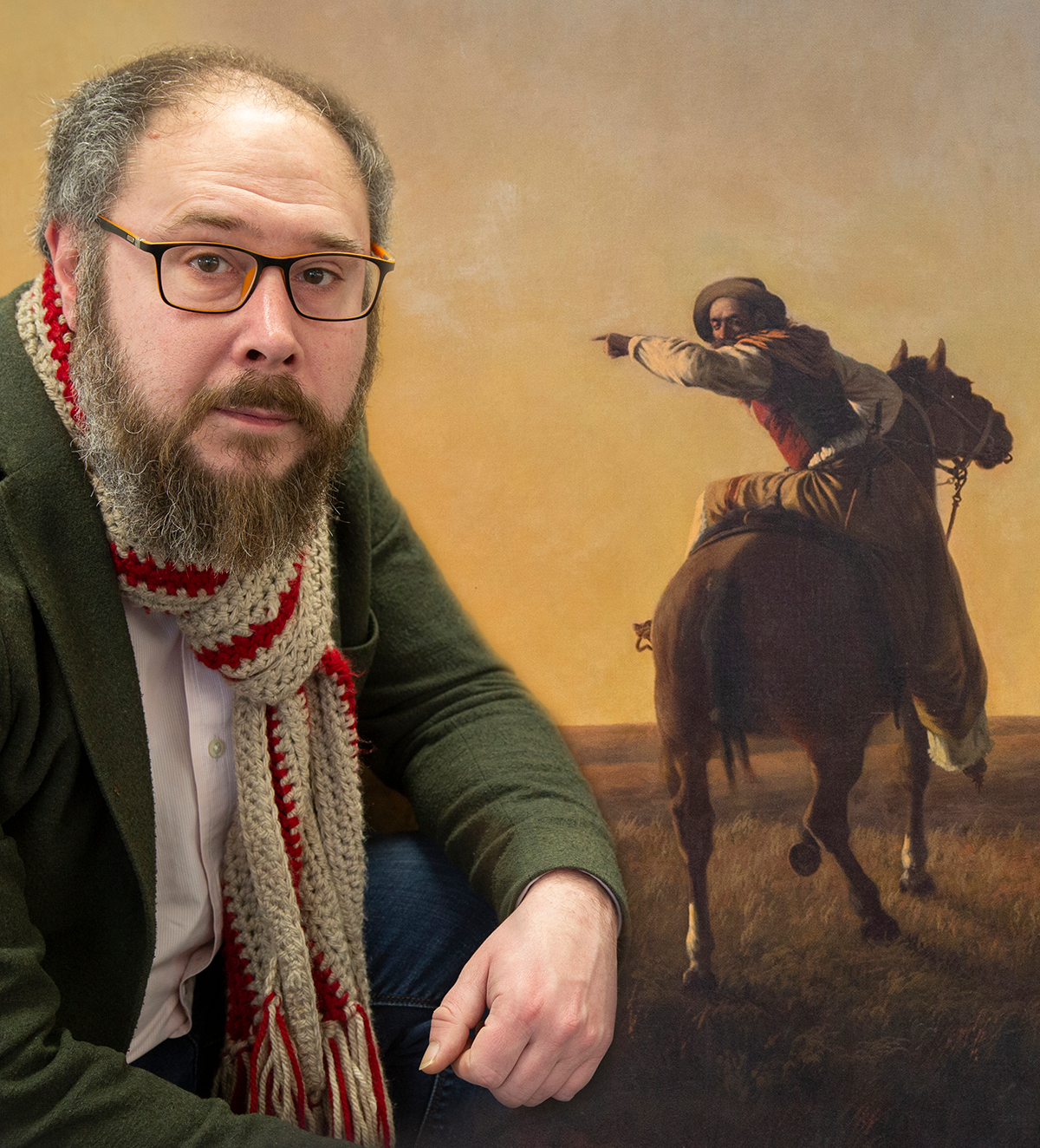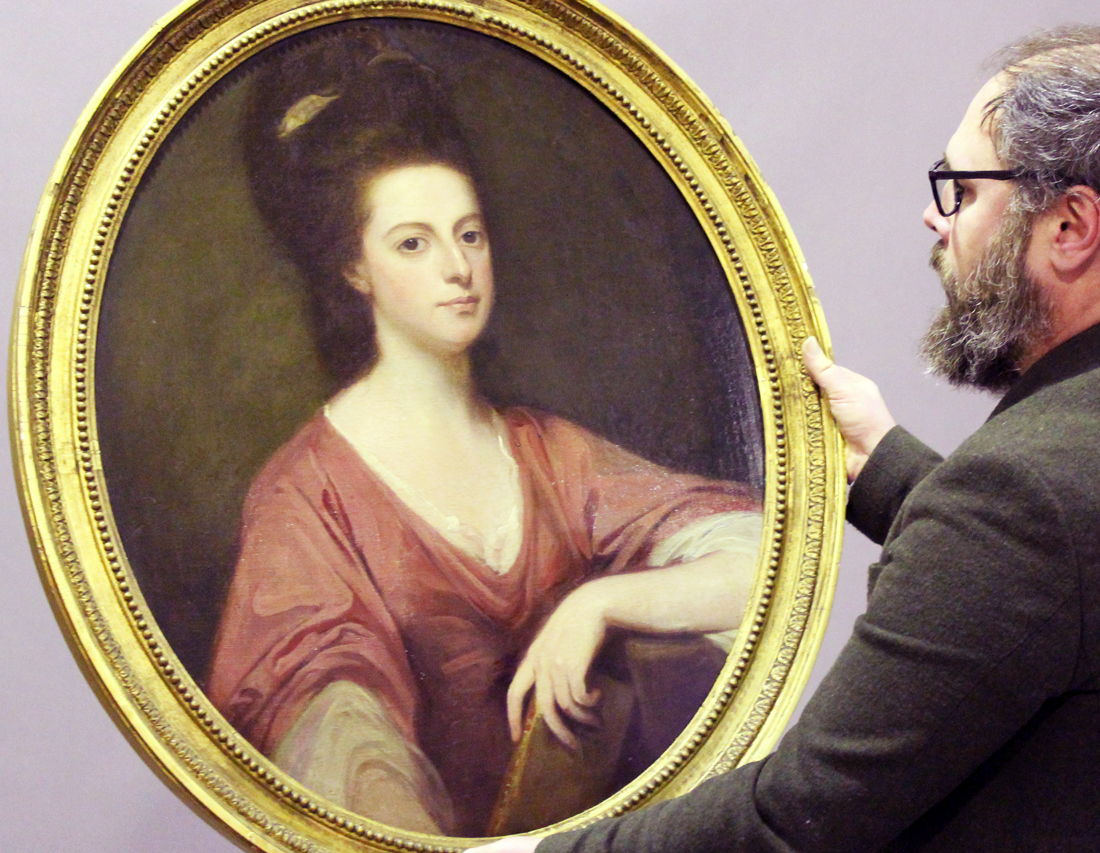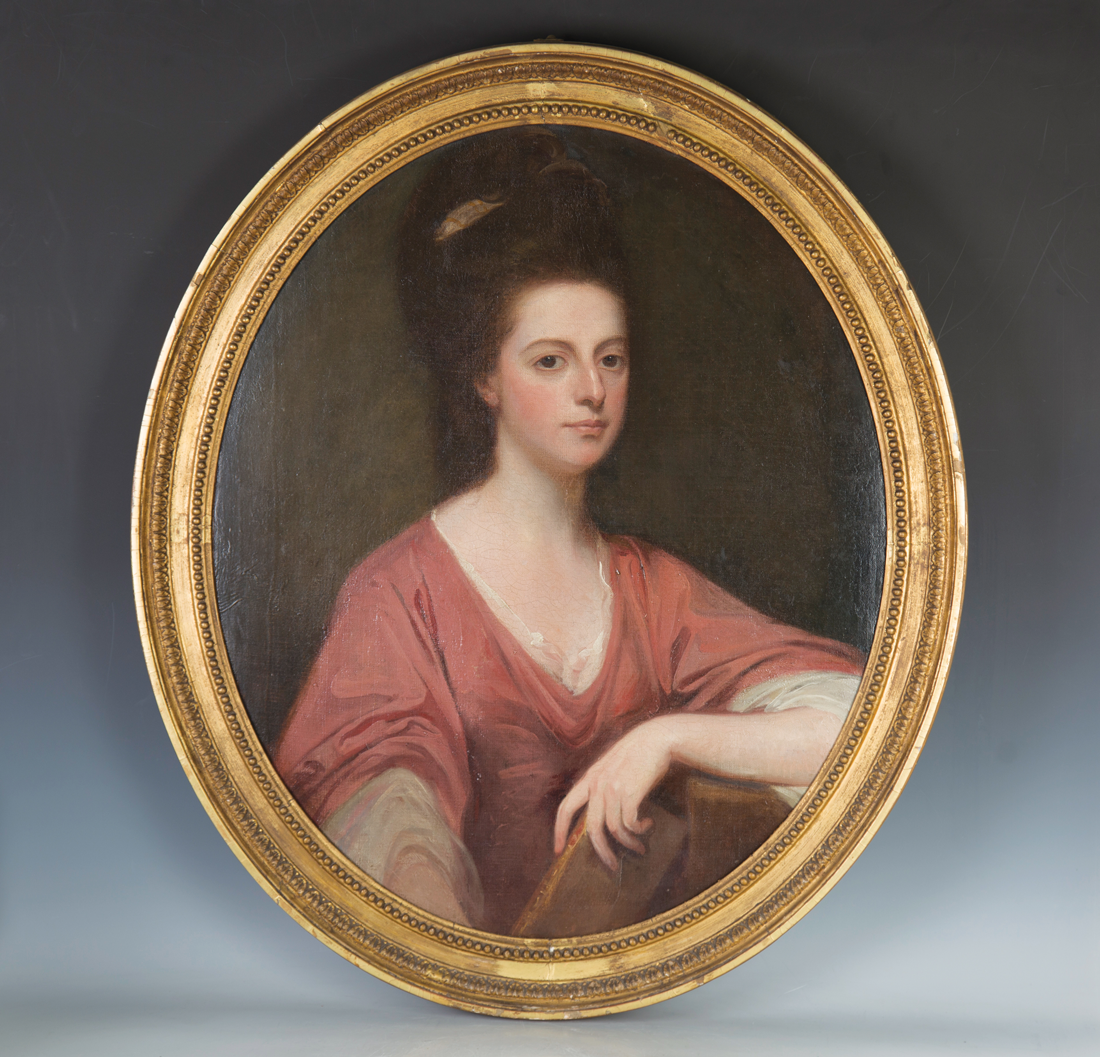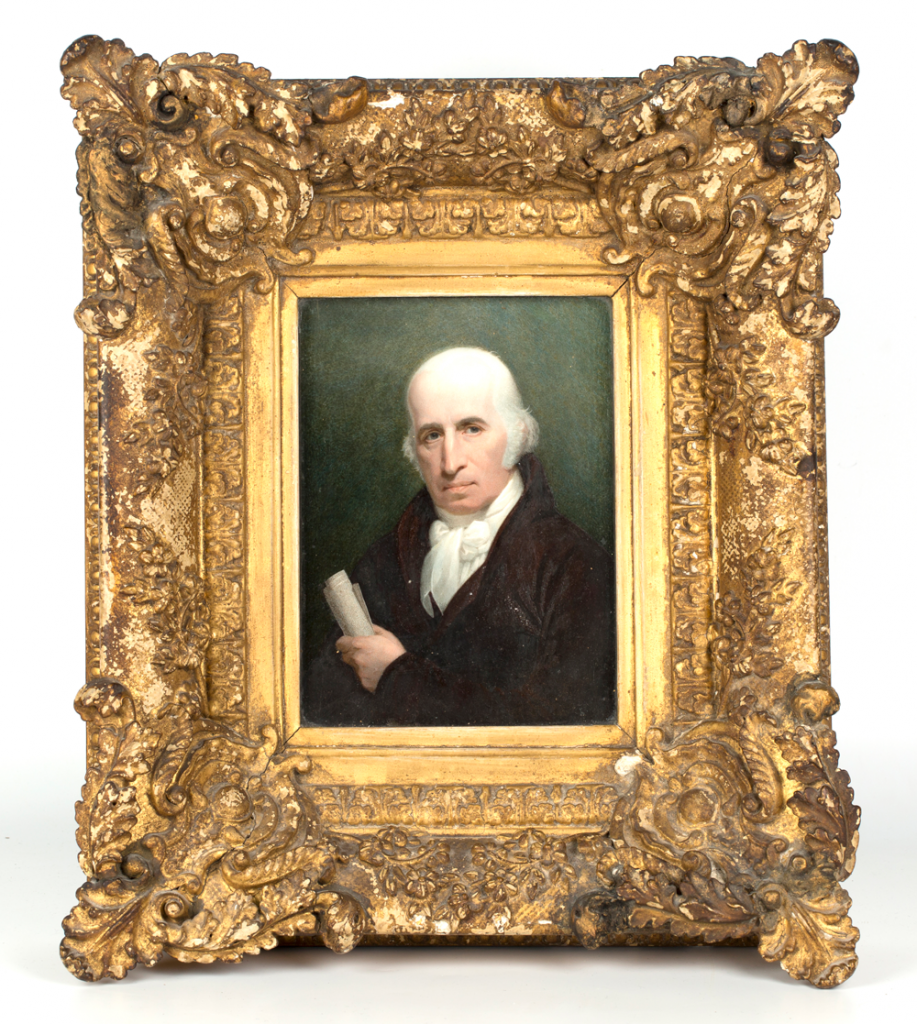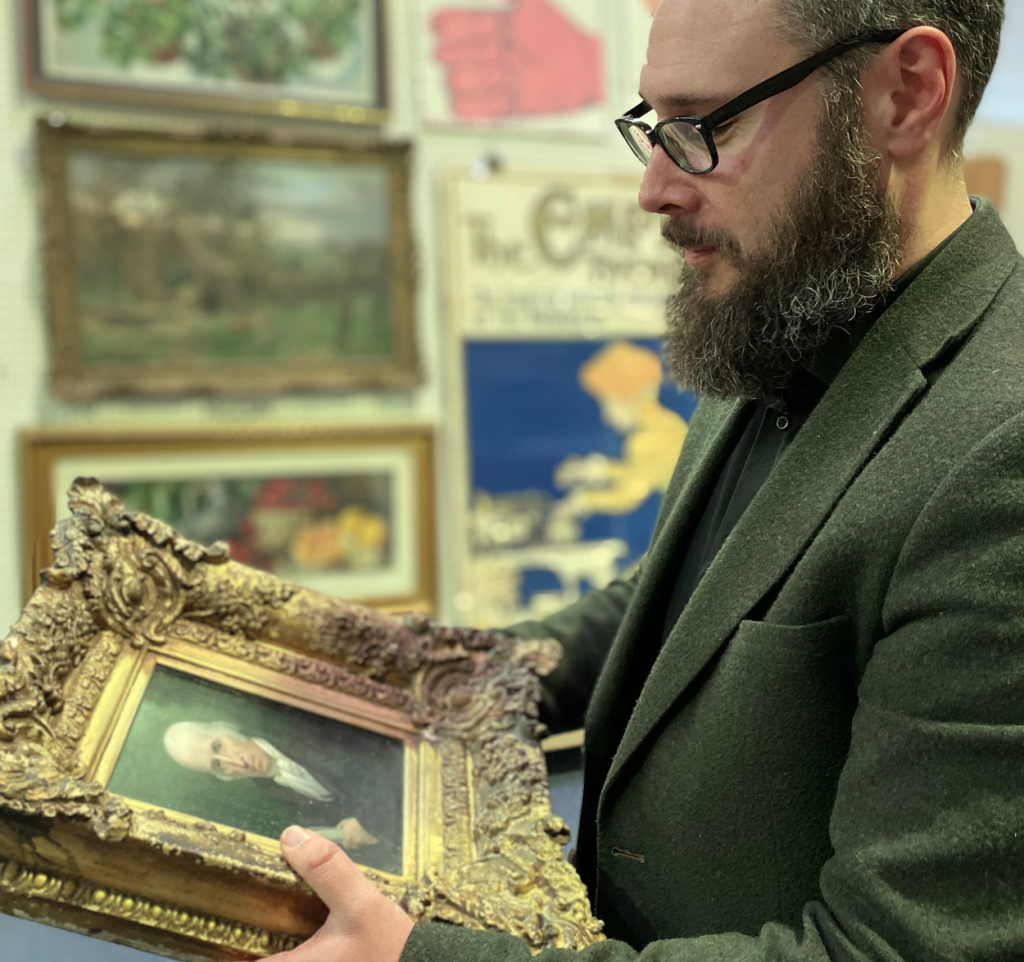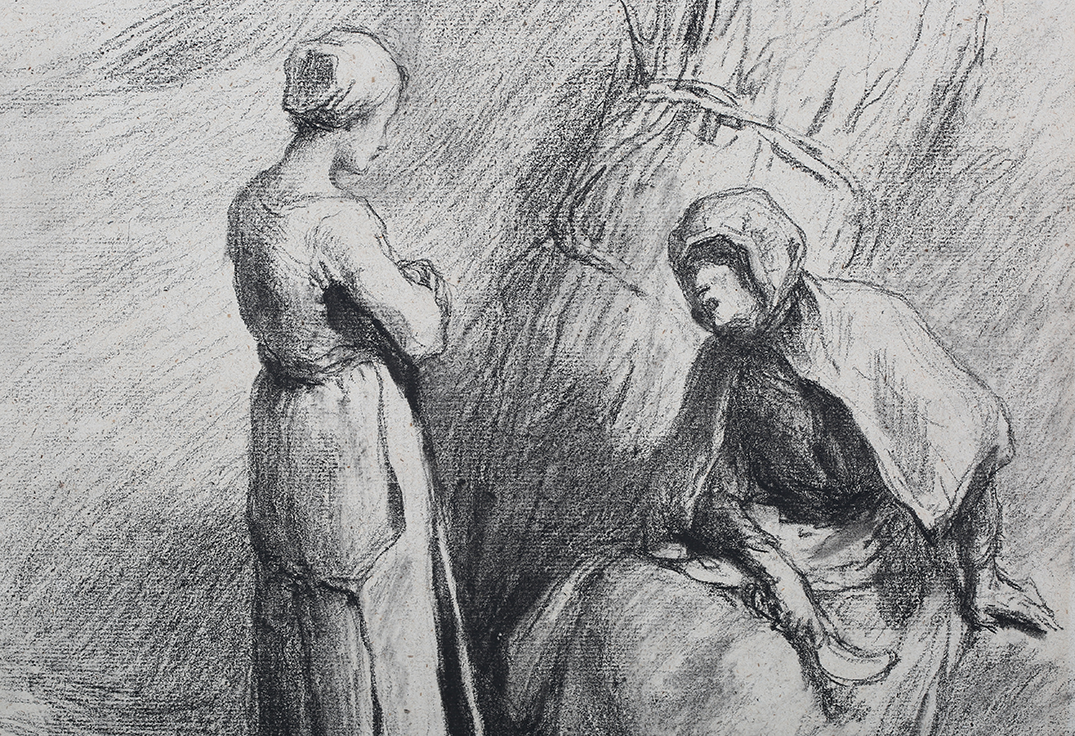
Toovey’s are delighted to offer an original crayon noir on laid paper by Jean-François Millet (1814-1875) in their forthcoming Fine Art auction on 27th November. The work was previously unseen and untraced for 74 years.
This work is a study for Millet’s The Faggot Gatherers in the collection of the National Galleries of Scotland which can be seen online by clicking here. Acquired by Augustus Philip Brandt at some point in the late 19th/early 20th century, the present work has remained within the family until the present time.
In 1851, Millet left Paris for Barbizon with his family, drawn to the rural village on the edge of the Forest of Fontainebleau. There, he was profoundly affected by the sight of local women who gathered bundles of sticks, or faggots, to sell as firewood—work that typically fell to the poorest members of society, often older women. As a child of a farming family, Millet felt a deep connection to these scenes of rural hardship, making the figure of the faggot gatherer a recurring motif in his body of work., Millet wrote to his friend and future biographer, Alfred Sensier, describing his first interactions with the local peasant labourers.
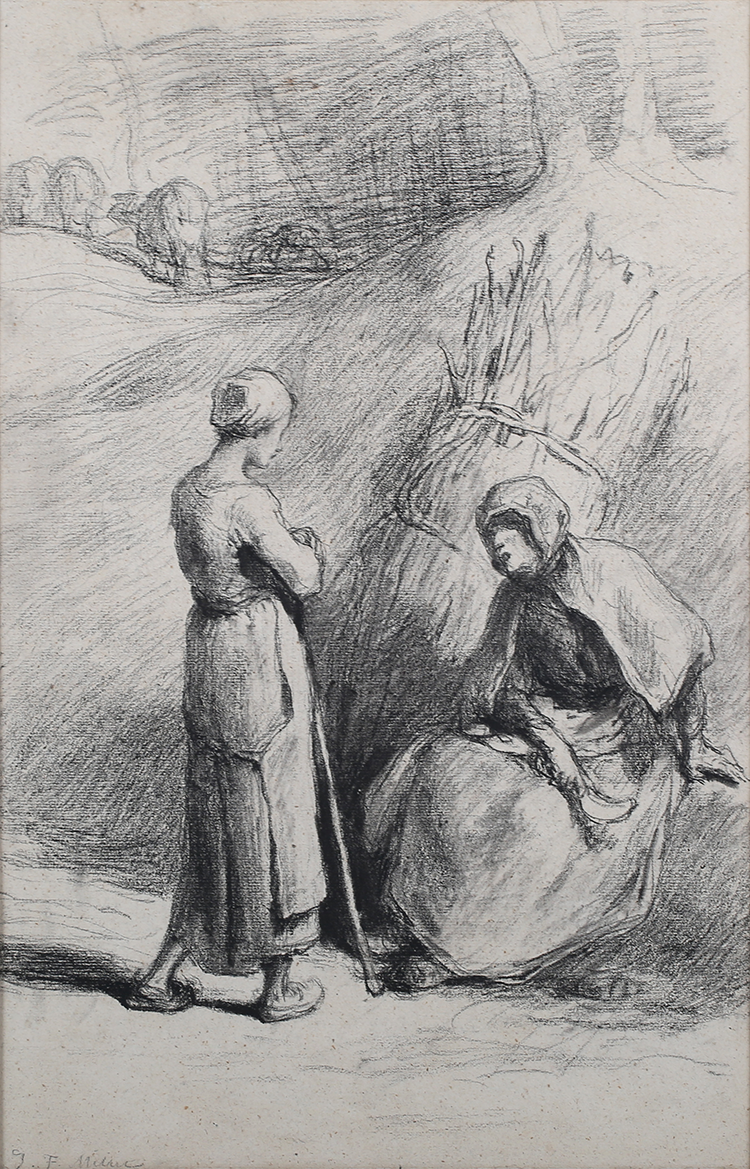
You are seated under the tree experiencing all the well-being, and the tranquillity that you can enjoy; then you catch sight, coming down a little footpath, of a poor figure laden with a faggot. The unexpected and always striking way in which this figure appears before you takes you back unwillingly to the unhappy condition of mankind, to the fatigue. It always gives an impression like that La Fontaine expresses in his fable of the woodcutter: ‘What pleasure has he had since he was born? Is there a poorer man on this round earth?’
This theme permeated many of Millet’s sketches and paintings from the period of around 1850 to 1855. The present work captures two women resting after their labour: the bare, shoeless feet of the younger woman signal her poverty, while the older woman’s bent posture and claw-like hands
suggest years of gruelling toil. Millet’s dedication to Realism shines through, reflecting his moral sensitivity to the suffering and despair he witnessed in the peasant community. The drawing exemplifies unflinching realism, observed directly from life, yet Millet elevates the scene to an allegory on the passage of time, in which the young figure looks down at the elder as if confronted with her own inevitable fate.
Differences between the present work and the oil on panel at the National Galleries of Scotland include the placement of the faggot bundle, and the hand positions of the figures. The wood in the background, likely the Bas Breau area of the forest of Fontainebleau, is more imposing in the final work, the shadows of which form a chiaroscuro foundation for the figures to be lit from a single light source emanating off canvas.
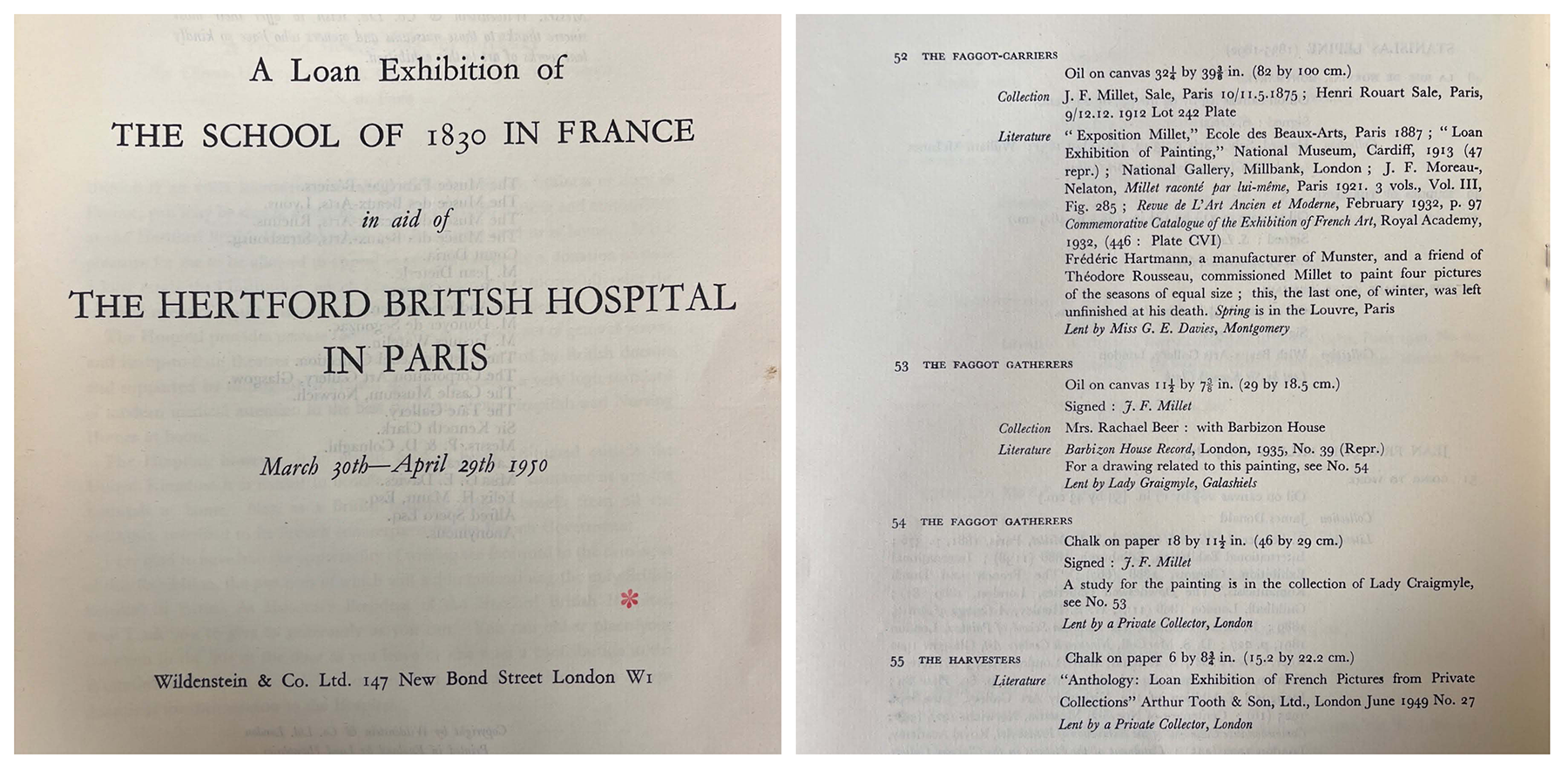
In 1950 the present work was exhibited alongside the oil version in ‘A Loan Exhibition of the School of 1830 in France’ organised by Wildenstein & Co. as catalogue number 54, where it was leant by ‘a Private Collector, London’, Augustus Philip Brandt (1871-1952).
Augustus Philip Brandt, the eldest of four brothers, was born in London on April 15, 1871, to Augustus Ferdinand Brandt of Hamburg and Elizabeth von Oesterreich of St. Petersburg. In 1895, he became a partner in his family’s merchant banking firm, Wm. Brandt’s Sons & Company, originally founded by his ancestor Emmanuel Brandt in 1805 and transformed into a banking business by his father in 1859. Augustus took on the responsibility for the bank’s American interests. The firm itself was multifaceted, encompassing banking, timber, commodities, and insurance.
During a trip to Egypt, Augustus met and fell in love with Jean Champion Garmany of Savannah, Georgia. They wed in May 1898 and had two daughters: Jean, born in 1900, and Gwendolen, born in 1904. Augustus, reserved and private, was a striking contrast to his sociable wife, who hosted grand gatherings at their home, Castle Hill, Bletchingley.

At Castle Hill, Augustus enjoyed seclusion in his small studio, a workshop he crafted from part of the stables, where he engaged in woodworking and cabinet making. The garden was another haven for him, where he would spend hours taking in the sweeping views over the Weald. Whenever possible, he set out on walking expeditions in the Bavarian Alps, often accompanied by his daughter Gwen. Augustus collected artworks by European artists, and in 1927 he commissioned Philip de László to paint members of his family, including himself. Augustus died at Bletchingley in 1952.
Toovey’s would like to thank Aidan Weston-Lewis, Joe Tursellino, Professor Frances Fowle, Hannah Brockhurst, and Tim Williams for their assistance in the cataloguing of this lot.
